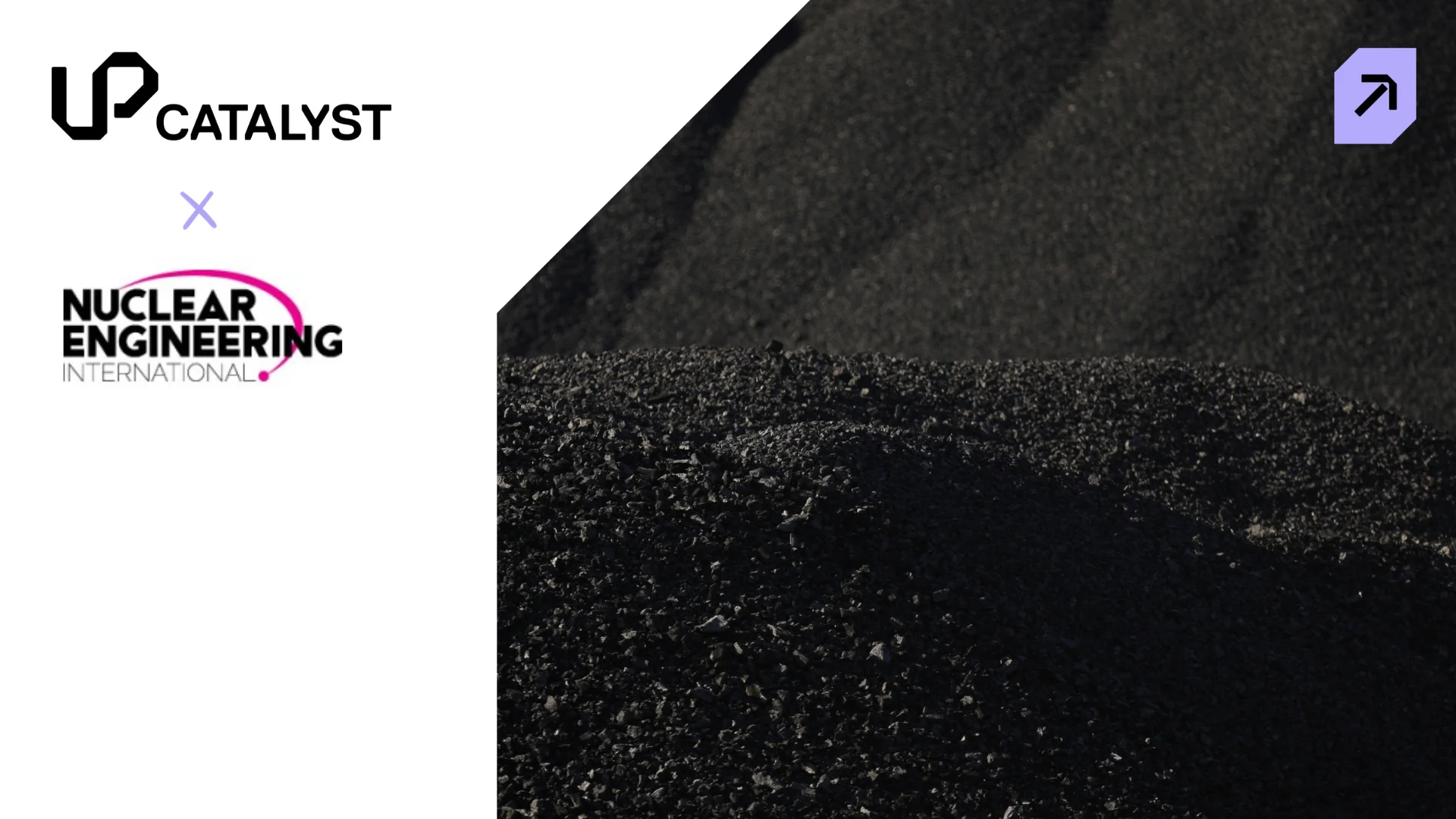Home » Molten Salt Regeneration: The Game-Changer

This article was shared at Nuclear Engineering International.
UP Catalyst’s technology to produce sustainable carbon materials and nuclear power generation share common ground in their reliance on high temperatures and the need to remove impurities from the salt. Molten Salt Reactors (MSRs) are nuclear reactors that utilise hot liquid fuel composed of salt in place of the solid fuel commonly used in traditional reactors. The fuel salt has a unique property that allows it to function as both the source of heat and the coolant, making it a highly efficient and flexible option for power generation.
The idea for the project called MoReCCU, or Molten Salt Regeneration for Carbon Capture and Utilization, was born from the need to maximise resource efficiency. UP Catalyst reprocesses CO2 to produce carbon nanomaterials and graphite, using the electrolysis method with molten salt used as an electrolyte. Working with the Institute of Science and Innovation in Mechanical and Industrial Engineering (INEGI) in Portugal, Slovak University of Technology (STU) in Bratislava and the University of Lleida, UP Catalyst joined forces to optimise the technology of Molten Salt Carbon Capture and Electrochemical Transformation (MSCC-ET). This is a process conducted at very high temperatures reaching 800 Celsius. The consortium is working to implement the best industry practices as it develops the technology.
Metal oxidation is a natural consequence of high temperatures and it can also negatively impact the quality of molten salt, as well as the quality of the end-product in UP Catalyst’s case – carbon. During the project, a semiautomated system that circulates molten salt will be constructed to remove the electrolyte mixture’s impurities. This results in both the preservation of the salt for reuse up to 100 times and an improvement in the quality of the carbon produced. In removing the impurities this is a solution that solves an important production aspect that has been challenging the nuclear industry for many years.
Purifying the extracted raw material can often be a lengthy process that involves the use of chemicals to purify and characterise carbon according to customer specifications. The innovation of this system lies in achieving high purity and clean carbon immediately after extraction from the reactor, streamlining the purification process and increasing efficiency. To achieve its goals, the consortium is designing a high-temperature-resistant device that can separate solid particles from the liquid medium. Nickel-based alloys have been widely used in the nuclear and solar power industries, as they generate a surface oxidation that provides a useful protective layer against further corrosion. However, even with their mild corrosion properties, they still give off small amounts of metal particles.
The MoReCCU project aims to monitor the cumulative concentration of metal particles in the molten salt, enabling better control of the cleanliness of the molten salt. This is particularly crucial for molten salt nuclear reactors, where the corrosivity of molten salts and the changing chemical composition of the salt/fuel mixture pose significant maintenance challenges. By giving the industry a device that can operate in up to 800-degree environments and can handle the corrosive nature of the molten salt, they can react faster to different corrosion-related failures. Nuclear molten salt reactors typically operate at around 700 degrees. By using the filtration device as a solid material removal, technicians can also analyse the composition of the particles. This information can act as an early warning sign for emerging corrosion-related incidents. Decayed fuel products can also be removed using this technology, thereby increasing the efficiency and safety of the reactors
The project is tackling important production challenges, including waste management, energy efficiency, and resource efficiency. It offers a sustainable alternative to reduce the need for environmentally damaging carbonate salt mining, while also targeting a reduction in production costs. Over the past three years, the cost of carbonate salt has skyrocketed by 260%, primarily due to its widespread usage in energy storage applications. By tackling these challenges, the project proposes a promising cost-effective strategy for repurposing valuable materials. The device is suitable for use in a wide range of industries. As the project leader and technology owner, UP Catalyst will coordinate the technical and operational activities. The University of Lleida will conceptualise the system and determine the key requirements. The Slovak University of Technology in Bratislava will be responsible for the design of the molten salt regeneration system, which will be later constructed by consortium partner INEGI.
The development timeline for the filtering system project involves several important milestones. The lab scale test filter was completed recently. This will be followed by the selection of filter material and the completion of the full-scale design by September of this year. Once the design for the kilogram-scale reactor is finalised, work on the tonne-scale design will begin at the end of 2023. By autumn of 2024, the team aims to have the tonne-scale filtering system ready for implementation. These critical milestones represent a systematic approach to project development and demonstrate the team’s commitment to achieving its goals in a timely and effective manner.
Removing impurities from the salt at high temperatures the nuclear industry can improve the quality of its molten salt fuels as well as control corrosion more effectively and increase both the efficiency and safety of these reactor designs